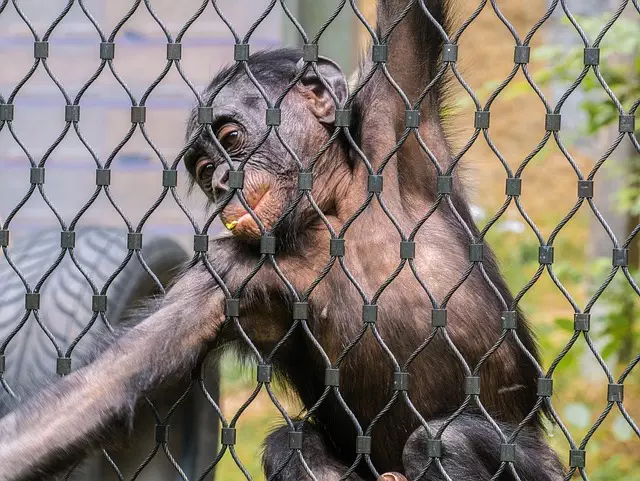Maeng Da Kratom, a variant of the Mitragyna speciosa plant, is celebrated for its diverse effects, ranging from stimulating to calming, and has historical significance in Southeast Asian cultures as well as parallels with Egyptian flower tea. This potent strain's unique alkaloid profile, particularly high levels of mitragynine and 7-hydroxymitragynine, is amplified by a specific drying process, leading to its strong efficacy in various forms such as tea or capsules. The effects, which can last upwards of several hours with peak intensity one to two hours post-consumption, cater to users seeking either invigoration or relaxation. Maeng Da's reputation as a versatile and effective wellness tool is supported by its traditional use and modern popularity in addressing ailments, enhancing focus, and providing mental clarity. Its production adheres to strict quality control standards to ensure consistency, purity, and effectiveness. The historical link between Maeng Da Kratom and Egyptian flower tea lies in their shared preparation methods, which highlight the therapeutic properties of these botanicals and their place in maintaining well-being across cultures and time.
Maeng Da Kratom Powder emerges as a subject of growing intrigue, rooted in its Southeast Asian origins and celebrated for its nuanced effects. This article delves into the potency of Maeng Da, tracing its roots to the lush forests of Thailand and exploring the alchemical process that transforms this plant into a fine powder. Beyond its traditional use, Maeng Da’s connection to Egyptian Flower Tea offers a fascinating cross-cultural insight, blending historical practices with modern wellness rituals. Join us as we unravel the mysteries surrounding this potent botanical and celebrate its place in both ancient brewing traditions and contemporary herbal supplement use.
- Unveiling the Potency of Maeng Da Kratom Powder: A Closer Look at Its Origins and Effects
- Maeng Da's Alchemical Transformation: From Plant to Powder
- Brewing Tradition: Exploring the Egyptian Flower Tea Connection with Maeng Da Kratom
Unveiling the Potency of Maeng Da Kratom Powder: A Closer Look at Its Origins and Effects

Maeng Da Kratom, a potent strain derived from the leaves of Mitragyna speciosa, has garnered attention for its distinctive effects and historical use in Southeast Asia. This unique variety, often referred to as the “Granddaddy of all Kratom strains,” has been a subject of interest for botanists and herbal enthusiasts alike. Its origin traces back to the dense forests of Thailand, where indigenous peoples traditionally utilized it for its stimulant properties, alongside its traditional role in Egyptian flower tea preparations, which adds another layer to its cultural significance. The alkaloid composition in Maeng Da Kratom leaves is rich and complex, contributing to a wide array of effects that users experience. These effects are typically characterized as energizing and euphoric at lower doses, while higher amounts can induce sedative and pain-relieving sensations. The finely ground powder, when brewed into tea or encapsulated for ingestion, offers a potent concentration of these active compounds, making it a preferred choice among users seeking relief from various ailments or a boost in mental clarity and focus.
The effects of Maeng Da Kratom are widely reported to be more pronounced than those of other Kratom strains due to its specific cultivation process and alkaloid profile. The leaves undergo a unique drying process that enhances the potency of the alkaloids, primarily mitragynine and 7-hydroxymitragynine, which are believed to be responsible for the plant’s effects. Users often report a long-lasting impact, with the sensations typically peaking around one to two hours post-consumption. The versatility of Maeng Da Kratom means it can be consumed in various forms, each offering a different experience. Whether steeped as a potent tea or encapsulated for precise dosage, the strain’s effects are well-documented among users who seek its stimulant or sedative properties, making it a staple in the herbal supplement market.
Maeng Da's Alchemical Transformation: From Plant to Powder

Maeng Da Kratom, a botanical ally revered for its potent effects, undergoes an intricate journey from the lush landscapes where it thrives to the fine powder that wellness enthusiasts seek. This transformative process begins in the natural environment of Southeast Asia, where the leaves of the Mitragyna speciosa tree are meticulously harvested. The leaves, often likened to the Egyptian flower tea in their vegetal origin, are then subjected to a precise drying method that preserves their unique alkaloid profile. This careful handling is crucial in maintaining the integrity of the plant’s active compounds, which contribute to its distinctive effects.
The drying process sets the stage for the subsequent grinding into a finely milled powder. This powder retains the essence of the Maeng Da leaf and offers a concentrated form that can be easily ingested. The alchemical transformation from plant to powder is not merely a physical change but also a transformation of energy and potency. Each batch of Maeng Da Kratom powder goes through rigorous quality control measures to ensure consistency, purity, and efficacy, making it a reliable choice for those looking to experience its benefits. The end product, a testament to the meticulous care taken at every step, is a world away from the original leaf and offers a potent concentrate that has earned its reputation as one of the most sought-after strains in the kratom community.
Brewing Tradition: Exploring the Egyptian Flower Tea Connection with Maeng Da Kratom

Maeng Da Kratom, a strain of Mitragyna speciosa, has a rich history and brewing tradition that intertwines with the venerable Egyptian Flower Tea. This unique tea, known as “Shai al-Simsim,” has been a part of Egyptian culture for centuries, with its origins tracing back to ancient times. The similarities between the preparation methods of Maeng Da Kratom and Egyptian Flower Tea are striking, particularly in their shared focus on harnessing the natural benefits of the plant through hot water extraction. While Maeng Da Kratom is primarily associated with Southeast Asia, its brewing process shares parallels with the Egyptian tradition, both involving the drying of leaves and a steeping technique that releases the plant’s rich alkaloid content into the brew. This overlap in methods suggests a fascinating convergence of botanical wisdom from different parts of the world, highlighting the global appreciation for the medicinal and invigorating properties found within these plants.
The process of brewing Maeng Da Kratom, much like Egyptian Flower Tea, is both an art and a science, requiring precise temperature control and steeping times to achieve the desired effects. The resulting tea from Maeng Da leaves offers a robust flavor profile and a range of health benefits, including pain relief, mood enhancement, and increased energy levels. This brewing tradition not only connects Maeng Da Kratom to Egyptian culture but also underscores the importance of plants in historical societies for both sustenance and well-being. As such, the exploration of this connection offers a window into the past, revealing how ancient civilizations utilized local flora to maintain health and vitality.
Maeng Da Kratom powder, revered for its potent effects and rich origins, has captivated both researchers and enthusiasts alike. Its journey from the lush forests of Southeast Asia to a place of global interest is a testament to its unique qualities. The intricate process transforming this plant into a fine powder showcases a blend of tradition and alchemical precision. Moreover, the surprising connection between Maeng Da and Egyptian flower tea offers a fascinating perspective on its historical use, enhancing our understanding of its cultural significance. As we conclude, it’s clear that Maeng Da Kratom continues to intrigue and offer insights, not only into its potential effects but also into the depth of human tradition and botanical lore.






